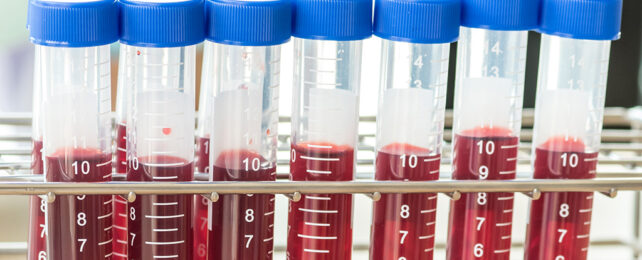As treatments for multiple sclerosis (MS) continue to improve, scientists are looking for ways to spot the condition before symptoms set in. With nothing more than a drop of blood, medical specialists could soon have years of advance warning that the disease is developing.
MS affects nearly a million people in the US alone, whose own immune systems degrade the protective coating of nerves, causing a catastrophic loss of motor control. Right now, diagnosis is only possible through sophisticated brain scans, but this new research could help in the development of a simple blood test that could supplement existing diagnostic tools.
A team led by researchers from the University of California San Francisco (UCSF) uncovered more than a dozen antibodies common to hundreds of MS patients whose serum samples were stored in a large depsitory. With the antibodies considered capable of turning their focus onto human cells, the discovery may help us understand how and why immune systems can often attack healthy parts of the brain and central nervous system and give rise to the condtion.
While the biomarkers were only found in around 10 percent of sera taken from individuals who would go on to develop MS, everyone who had this specific pattern of antibodies in their blood went on to develop the autoimmune disease, making it a hugely useful predictor.
"Over the last few decades, there's been a move in the field to treat MS earlier and more aggressively with newer, more potent therapies," says neurologist Michael Wilson, from UCSF. "A diagnostic result like this makes such early intervention more likely, giving patients hope for a better life."
The researchers compared blood samples taken across the course of several years from 250 US military workers with MS and 250 without. They then confirmed their results in a separate UCSF study of 126 people.
Having identified a common set of autoantibodies, the team noted a similarity to patterns seen in common viruses like the Epstein-Barr Virus (EBV). Previously linked to MS and other immune disorders, the relationship between the virus and the autoantibodies points to another avenue for future studies.
The same people with the tell-tale autoantibodies also had more neurofilament light (Nfl) – a protein that's released in response to neurons breaking down – in their blood both before and after symptoms emerged. The suggestion is that brain damage is happening before MS symptoms show up.
"When we analyze healthy people using our technology, everybody looks unique, with their own fingerprint of immunological experience, like a snowflake," says biochemist Joseph DeRisi, from UCSF.
"It's when the immunological signature of a person looks like someone else, and they stop looking like snowflakes that we begin to suspect something is wrong, and that's what we found in these MS patients."
Plenty of questions remain – not least about why 90 percent of the MS cases studied didn't have this autoantibody signature – but we can add it to the growing pile of work helping us to understand how MS gets started.
"Diagnosis is not always straightforward for MS, because we haven't had disease specific biomarkers," says Wilson.
"We're excited to have anything that can give more diagnostic certainty earlier on, to have a concrete discussion about whether to start treatment for each patient."
The research has been published in Nature Medicine.
